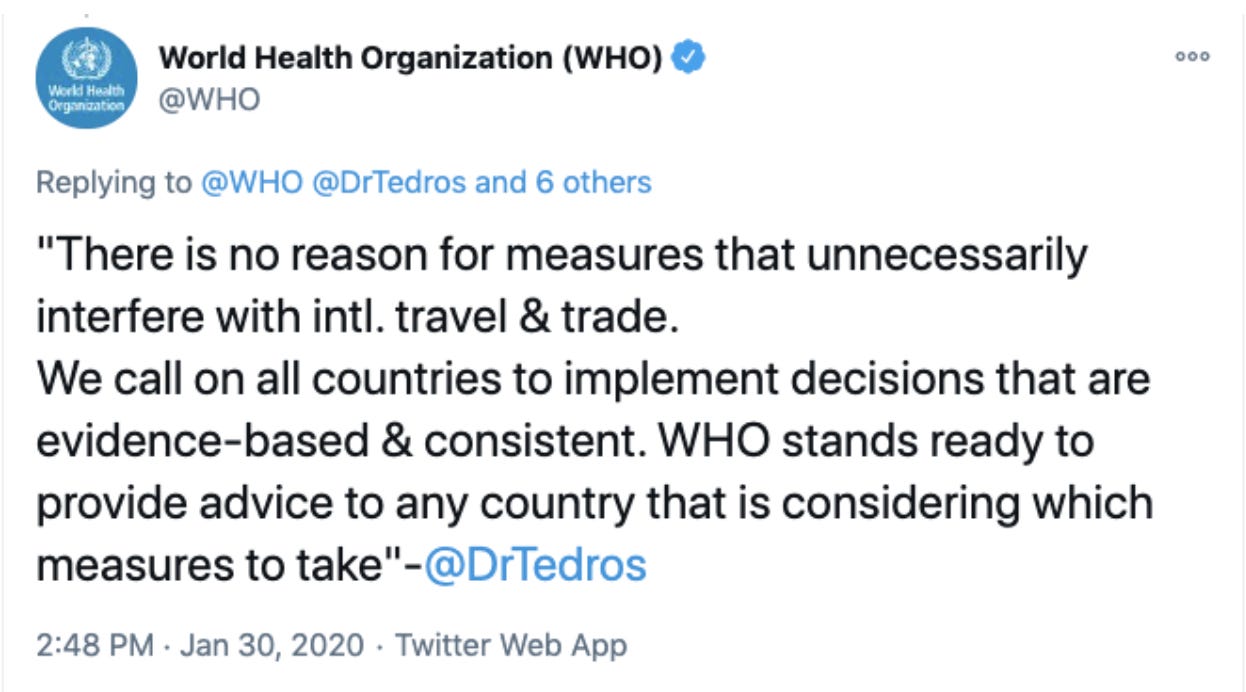We Need Adaptive Disconnectivity for Pandemics
COVID is not the end
Pandemic remains one of our main sources of systemic and existential risk.
The COVID pandemic is ironically serving as a distraction from developing the capabilities necessary to manage global pandemic risk, as well as what is needed locally to shield a community in the presence of an unfolding or active pandemic. A much more severe contagious disease is inevitable in the fullness of time. Don’t take your eye off the ball.
Despite our insistence on complicating things, it remains that the agents of contagious disease (e.g. viruses) multiply and travel via physical interactions and connectivity. Therefore, approaches to mitigation that don’t target connectivity directly will always be less robust and reliable.
Vaccines have historically been considered extremely desirable as they were understood to reduce effective connectivity via immunity, thus halting transmission (i.e. slowing transmission enough to bring R_0 below 1) without having to modify the actual connectivity network of the human social system. They have also offered individual protection, but this has rightfully been considered less central to what makes them attractive from a social standpoint. To effectively eliminate a disease from a population has obvious benefits over treatment of individual cases.
In contrast, therapeutics are typically meant to reduce symptoms and individual harm from disease. Clearly, in the current COVID context these two functions, halting transmission and treating individual disease, are being conflated. This conflation is to our detriment, but it is not accidental. Metrics were set via bureaucracy, and the bureaucracy is now interested in satisfying those metrics rather than solving the problem. And especially more interested in satisfying those metrics than introspecting on whether it is their place to solve certain problems in the first place.
It is extremely fragilizing to assume that we will have or be able to develop effective vaccines or therapeutics at the time they are needed in the realtime unfolding of a novel pandemic. Our current situation with COVID shows some of the danger in this assumption: the vaccines are not bringing collective transmission rates R_0 below 1. This means, even if they reduce disease severity, evolution of the virus will continue, with the strong possibility of variants that reduce or eliminate the therapeutic effect. This approach also precludes the possibility of doing robust safety studies on both therapeutics and vaccines, especially of the medium- to long-term impacts.
The necessary tactic for an emerging disease that poses systemic risk is therefore obvious given these constraints: we must disconnect the connectivity network.
This is in fact the logic behind so-called lockdowns. If you stay in, you don’t mix with others, the disease has nowhere to go.
The problem is this is entirely unsustainable. Living a normal, healthy, and fulfilling human life demands local social interactions. There are obviously conditions under which lockdown would be necessary and even desirable against the alternatives. Consider a zombie apocalypse: OK maybe it is time to lockdown. But people are willing to bear considerable risk to live their lives. This needs to be understood and ultimately respected. Policy-makers don’t get to determine what makes life worth living (no matter how badly they’d like to).
So how can we disconnect in a way that mitigates against devastating pandemic without needing to depend on global “lockdown” or tenuous technologies with unknown risk profiles?
As is well known in network science, even a modest number of long-range connections in an otherwise spatially-constrained system drastically reduces average internode distance, effectively “collapsing” the space. This is why pandemic risk is at an all-time high. No contagious disease is more than a few hops away from anyone on Earth. Let me say it again: whoever is sick with a contagious disease is at most a small number of steps away from you, wherever you are.
Living a full life demands local interactions, but it does not demand uninterrupted long-range travel. That needs to be seen as what it is: a luxury that carries significant risk. We can’t expect people to forego luxuries altogether, but we should consider them as the first thing to sacrifice (temporarily) when the situation demands that we make some.
Adaptively severing long range connections — essentially all long-range connections — should be the first step in addressing any emerging disease that poses significant pandemic potential. Full stop. This one step would immediately slow any global spread by many orders of magnitude. The average network distance between individuals would increase from a small handful (the classic “six degrees of separation”) to a much larger number, likely on the order of tens-of-thousands, if not more.
Not only would pausing long-range connections SLOW the spread enormously, but if done early would spare many regions from contracting a disease in the first place. In those locations life could go on as normal.
Not traveling the world is tolerable. Not being able to leave the house isn’t.
Back in early 2020, the World Health Organization advised the opposite: people should keep traveling, far and wide. This is criminal, whether malicious or negligent.
Policies must be coherent and make sense to people if you expect them to comply: if a contagious disease does not justify halting flights then it does not justify forced treatments nor lockdowns. If it justifies either of those then it certainly justifies temporarily severing long-range connections.
But we are getting the inverse: lockdowns and forced treatments while international travel remains pervasive.
Most people don’t spend much time globe-trotting. But the “elites” making our policy decisions do. It’s part of their every-day. This is a major source of agency risk. They don’t want their lives interrupted (who does?), but it’s less visceral for them if yours is.
Of course regular people want to be free to travel, too. But the tradeoff needs to be made clear, and I think if it were people would respond appropriately: under conditions of a dangerous contagion, halting long-range mobility can spare local mobility. This is the vision I (naïvely) had for the USA early in 2020: call it “Island America”.
So while cutting long-range connections is the right approach, we can’t expect it. The next best thing is to shield your own community. This means controlling ingress at borders.
Incidentally, ethical localism demands two conditions for borders: (1) egress of non-criminals is never restricted, and, more relevant to our discussion here, (2) ingress is managed by the locale itself, and should never be imposed.
Of course larger central institutions will try to impose. Hence we will have to rely on the doctrine of the lesser magistrate: the willingness of local leaders to stick their neck out and say NO. I expect we will see more and more of this, for disease management and beyond.
Don’t take your eye off the ball, COVID is just a preview, and worse has now become a distraction. Worse will come, and we need to have clear heads in order to manage it. We must be willing and able to adaptively disconnect. Anything else is secondary.



People need to read this